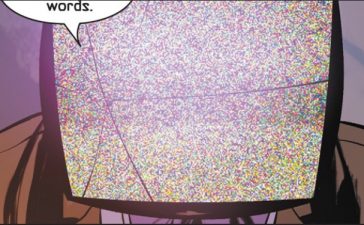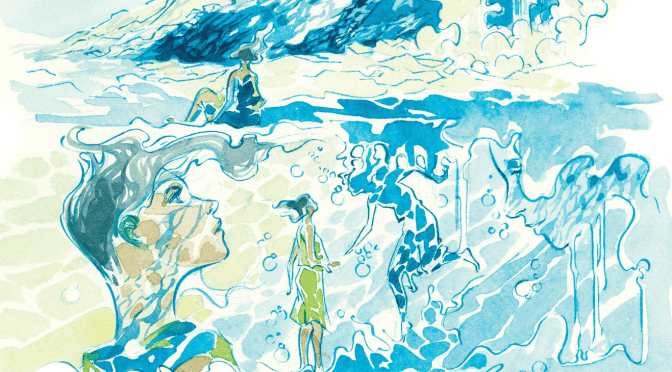
THIS WEEK’S FINEST: MIRROR #6
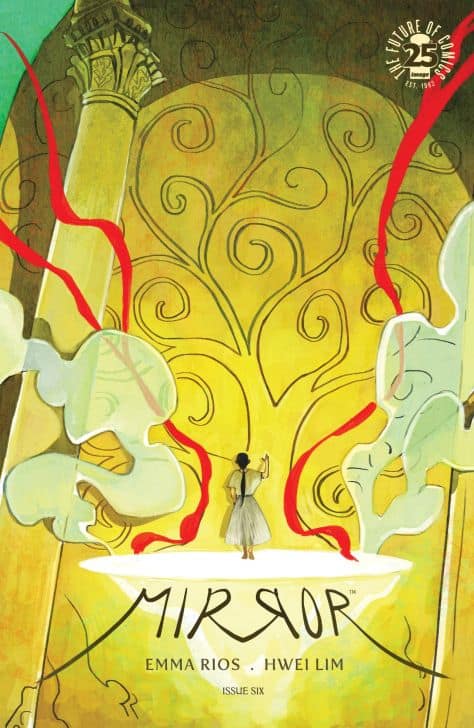
By Emma Rios & Hwei Lim
Artistic creation is a compulsion. An artist pursues their craft not out of whimsy but a deep-seated need. It is not something which may be set aside lightly; indeed, it is an essential aspect of their identity. Be it music, writing, the visual arts or any other medium, their emotional happiness is incomplete without it. It does not require for success, though many may desire it, the largest stage or the brightest spotlight, only the space for conjuring the artist’s own distinct vision. This understanding of the artist’s nature is at the core of Mirror as it commences its second arc in stunning fashion.
#6 presents a shift from the first arc which was concerned with military backed experiments involving animal/human hybrids. #6 contains enough broad strokes for readers to recognize it being set within the same culture though its relation to the first arc, both in terms of time and place, are left vague. To Emma Rios & Hwei Lim’s credit this choice never feels disorientating. Instead the reader is immediately pulled into her new narrative involving a sculptor and her apprentice. A large piece of the credit for this should be given to the visual narrative. As in the previous issues, the flowing painted art conveys a strong emotional resonance. The story’s first page is split into multiple segments. One features an outstretched palm, another a sculptor at work. Decorative motifs link the images together, creating a feeling of unity. At the bottom, Rios places Ninua, the pupil. Ninua’s face conveys the hesitation of youth caught between surety and self-doubt. It is a rich, textured piece of art which immediately envelopes the reader into this private world of master and apprentice.
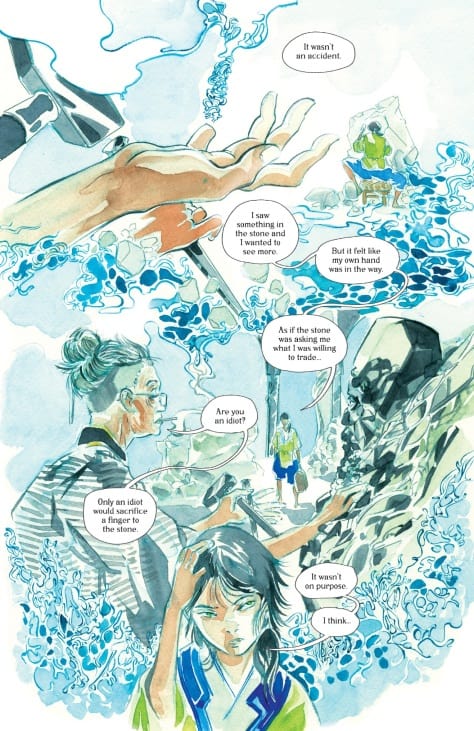
At this moment, Ninua finds herself caught up in the thrill of creation, willing to sever a finger in order to maintain a firmer grip on her vision. The master, Zita, chides Ninua for her starry-eyed daydreams when she should be considering the logistical benefits of having all ten fingers at her disposal. Yet, Ninua is young and not willing to listen to anything as practical as learned experience. For her the lesson is simple: “never be afraid of what I see in the stone.” Rios does an excellent job of building the relationship between Ninua and Zita over the course of the issue. Despite her scolding, Zita clearly cares about Ninua and is proud of her work. By the same token, Ninua admires her teacher, regardless of any youthful disdain for authority. Late in the issue, there is a splash page depicting the apprentice observing the sculptor at work. Rios bathes the scene in bright hues which highlight the warmth of the moment. It is a beautiful image which Rios & Lim’s skilled character work completely earns.
The bulk of the narrative occurs two years after the finger cutting incident. Zita’s trade in restorations earns her an assignment with the Elders, ethereal beings who guide the civilization. They have uncovered, tucked into a magical dimension, a mysterious structure full of enigmatic statues. The style of art, along with the Elders’ term Ziggurat for the building, evoke ancient Babylonian culture, which, in turn, suggests that the Elders have uncovered some distant link to their past. Indeed, Zita informs Ninua “This is what our ancestors saw in the stone.” This type of tangible connection to the past can be quite powerful, as anyone who has ever recognized a familiar expression in millennia old portraits can attest. It is an invitation to unwrap the strange trappings of another culture in order to discover a common humanity that spans centuries. At the same time, this mix of familiar and foreign can be quite haunting. These are powerful emotions which gradually come to overwhelm the young apprentice, especially as she takes greater risks in order to delve deeper into the mysteries of the Ziggurat.
 Rios
RiosRios art is striking throughout the issue; however, it truly shines when rendering the visions Ninua experiences within the Ziggurat. These are dominated by sea-blue shades and flowing lines. Shapes grow increasingly amorphous, as figures appear to merge into each other. Any hint of a grid disappears from the layouts. The sensation of water is so strong the reader almost expects the image to start sliding along the page. Such hallucinatory art conveys the full force of the wonder Ninua encounters within the Ziggurat. The reader understands how it draws her deeper, despite (or because of?) the danger that at any instant all sense of perception will vanish. Ninua should know better but cannot help herself. She has already sacrificed one finger for her art, what else is she willing to lose? This is heady material, yet, like the script, Rios finds the proper mix of ideas and emotion. Lim had already set a high-standard for the for series with her gorgeous artwork for the first arc. With #6 Rios raises that bar even higher.
#6 ends with a flashback to how Ninua first ingratiated herself into Zita’s tutelage. This highlights the bond between the two while returning to the theme of artists’ compulsion. Both Zita and Ninua had no real choice except following their own inspirations. While such driving forces can create beauty, they can also destroy. Like so much in life, the trick is finding the proper balance. A lack of this equilibrium lends Mirror #6 its tragedy.
Mirror was one of the best new series of last year and its latest issue suggests that it will be just as memorable, if not more so, in 2017. All the more reason it is This Week’s Finest.
Cheers.
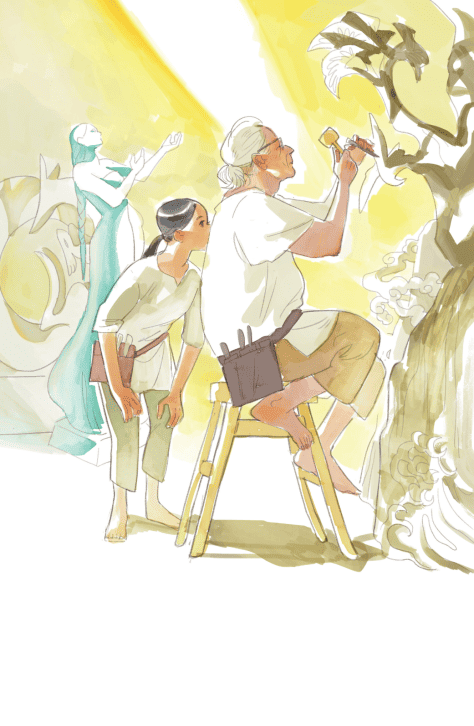
Correction: An earlier version of the review credited Hwei Lim as the books main artist when it was Emma Rios and Emma Rios as the writer when it was co-written by Rios & Lim. The credits have corrected in the text & art samples








